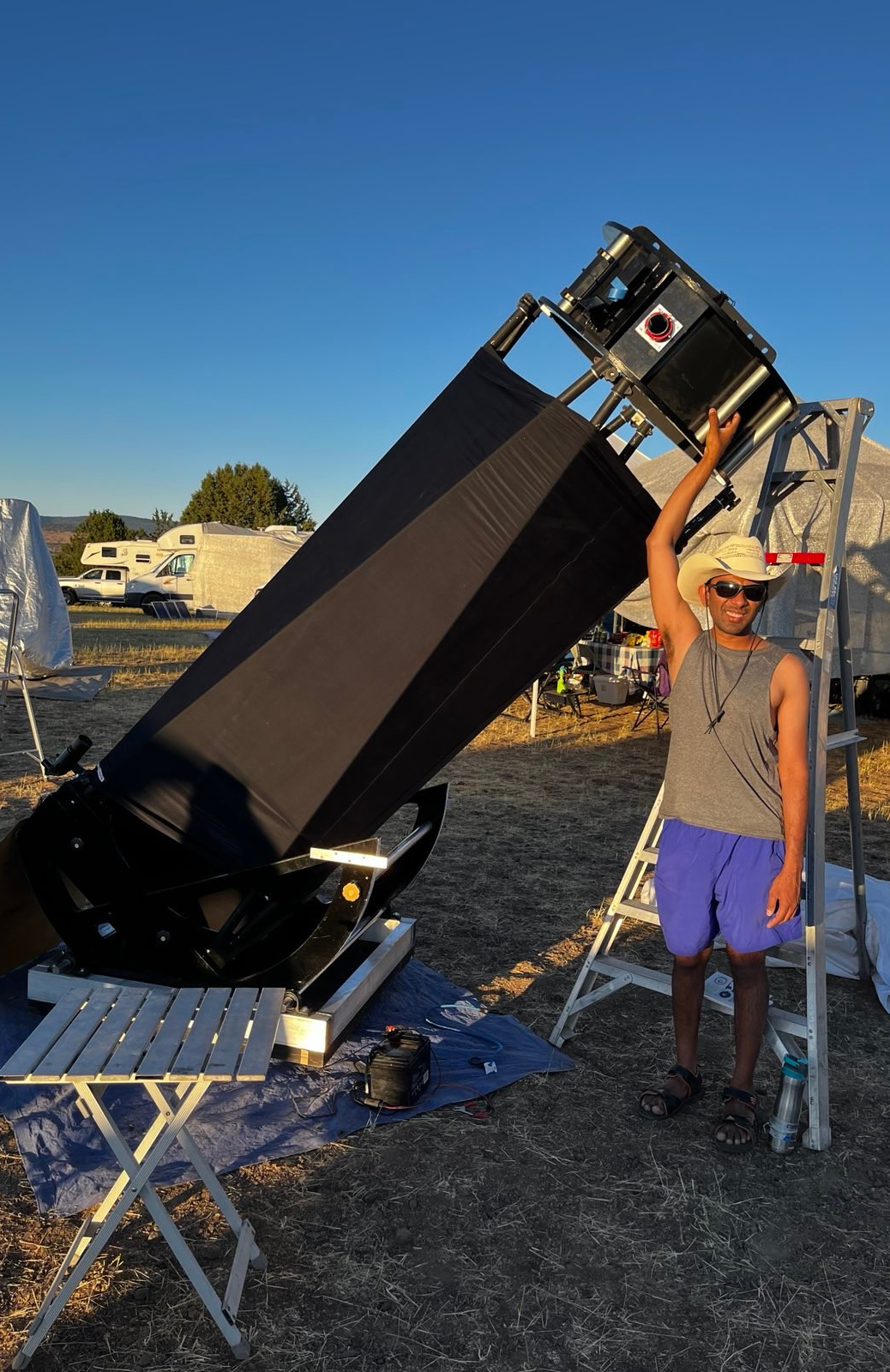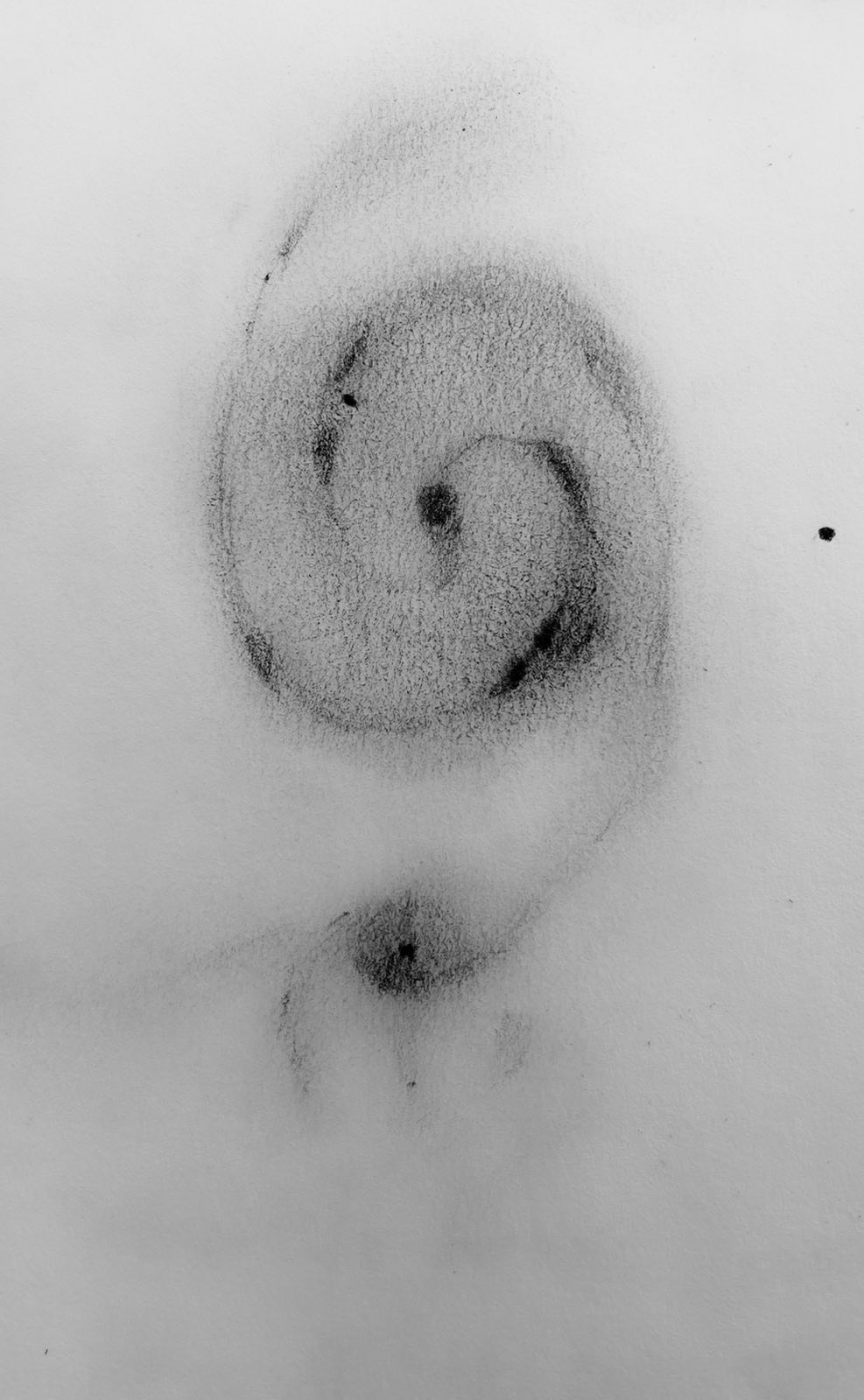Brief Bio
I am in my late 30s and presently live in the San Francisco Bay Area in California and work for a company focused on sustainable energy and home-improvement called GoodLeap. I am educated as a physicist and have chosen a career in software, machine learning and artificial intelligence.
Even though I did not formally study computer science/engineering save for a few classes, it has been a passion of mine since middle school. Association with peers studying computer science during undergraduate college, the Google Summer of Code program, as well as working on the open source project KStars for many years honed my skill with computers before I started my career as a software and ML engineer.
Before moving to the silicon valley, I got a PhD in Physics from the University of Texas at Austin. I was advised by Phil Morrison and co-advised by Mark Raizen. My thesis was on theoretical and experimental aspects of Brownian Motion in Liquids. I was very fortunate to work both on theoretical and experimental aspects of the same problem, picking up a diverse set of skills in the process.
I then worked at Apple, Inc. in several different aspects of machine learning – a training framework (thought of as a compiler), training/evaluating/deploying several neural-network models on the iPhone and Mac, building model-in-the-loop data annotation tools, contributing to model-training infrastructure, defining and supervising the delivery of complex training data for novel models, and on a model-deployment framework. In addition, I had an opportunity to rotate for 3 months into an LLVM-based GPU compiler team contributing to performance optimizations. One of the features that I am proud of contributing to was the static subject lifting feature on iOS released in 2022 that can be used to make stickers, that was highlighted in Apple's WWDC keynote as well as in an Apple machine learning blog post.
I indulge in astronomy as a hobby, tinker around with my Linux machines, learn math and astrophysics, go hiking / car camping / road tripping / photographing, build small DIY things, develop software as a hobby.
Most of this website is for sharing my hobby work rather than my professional work. If you're further interested in my professional contributions, see my Resume or the other links in the header.
Publications and Patents
My professional publications are also listed on Google Scholar.Patents
Experiments on Brownian Motion
- Observation of Brownian Motion in Liquids at Short Times: Instantaneous Velocity and Memory Loss
S Kheifets, A Simha, K Melin, T Li, MG Raizen
Science 343 (6178), 1493-1496 - Testing the Maxwell-Boltzmann distribution using Brownian particles
J Mo, A Simha, S Kheifets, MG Raizen
Optics Express 23 (2), 1888-1893 - Broadband boundary effects on Brownian motion
J Mo, A Simha, MG Raizen
Physical Review E 92 (6), 062106 - Brownian motion as a new probe of wettability
J Mo, A Simha, MG Raizen
The Journal of Chemical Physics 146 (13), 134707
Theory (Low Reynolds-number fluid dynamics)
- Unsteady Stokes flow near boundaries: the point-particle approximation and the method of reflections
A Simha, J Mo, PJ Morrison
Journal of Fluid Mechanics 841, 883-924
Other physics
- PhD Thesis, "Brownian motion in liquids: theory and experiment"
A Simha
The University of Texas at Austin - An algebra and trigonometry-based proof of Kepler's first law
A Simha
American Journal of Physics 89 (11), 1009-1011
Amateur Astronomy
- Galactic Tides
Sky & Telescope Magazine, February 2025 issue, pp. 58–60
- One Night of Stellar Evolution
Sky & Telescope Magazine, October 2024 issue, pp. 58–61
See errata in the next issue - Observing report on a few of the Holmberg dwarfs
Sidereal Times (monthly newsletter of the Austin Astronomical Society), July 2016, pp. 18-19 (Has some errors) - Observing report on the globular clusters in the Fornax Dwarf galaxy
Sidereal Times (monthly newsletter of the Austin Astronomical Society), February 2015, pp. 15-16
Amateur Astronomy
 Posing with my 28-inch telescope at Golden State Star Party 2024
Posing with my 28-inch telescope at Golden State Star Party 2024 Sketch of the Whirlpool Galaxy made at the eyepiece of my 18-inch telescope
Sketch of the Whirlpool Galaxy made at the eyepiece of my 18-inch telescopeAstronomy Projects
- KStars, a desktop planetarium for MacOS/Windows/Linux: I was the maintainer of the project for a year, between 2009–2010. It is now managed by Jasem Mutlaq and an excellent team of passionate developers, but I still make contributions whenever I can.
- Adventures in Deep Space, an excellent resource for visual deep-sky astronomy enthusiasts: I am currently the webmaster and maintainer of this project, while also contributing observing reports, articles and lists.
- The Astronomy Logbook Project is based on software I wrote during graduate school to use KStars and LaTeX to create beautiful logbooks for visual deep-sky observers.
- Zero-In is a fully functional proof-of-concept project to show how plate-solving and off-the-shelf motion sensors can guide a user to point a telescope precisely (to about 6') to a deep-sky object. The algorithm uses quaternion math to recalibrate the motion sensors from the star sensor, mitigating the deficiencies of the sensor. A high-level overview is found in this presentation, see also presentation videos linked below. A similar production-grade project is PiFinder by Richard Sutherland.
- This DSS Query Web Tool is a hobbyist-friendly way to fetch images of objects in the night sky from various services. It also allows you to adjust the orientation of the image to match the view through your telescope (a better version of this is available offline in KStars through the Views feature). It also makes querying SIMBAD for designations of objects easier – one needs to just click on a point in the image to find out what object lies there. It also makes annotating a DSS image with labels easy, so you can share it on forums etc. JavaScript isn't my first language, so this was mostly thrown together to scratch an itch with messy code.
- With author Larry Mitchell's permission and support, I reverse-engineered the binary format used to store the Mitchell Anonymous Catalog in the no-longer-sold MegaStar5 planetarium software and released the catalog here.
Astronomy Talks
I frequently use speaking to an audience of peers as a way to foment my understanding of a subject that I'm interested in and organize my thoughts. An added benefit is that my own understanding of the subject is documented for my future reference as well. It's a win-win for both my audience and for me! I followed this idea to get a better understanding of relativity and positional astronomy even though I'm not a subject matter expert in either. In other cases, I have had some personal project or anecdotes to present.- Two Decades of Amateur Astronomy, a talk on my personal journey in the hobby, delivered in-person at a Bangalore Astronomical Society workshop.
- Spherical Astronomy: This technical two-part course serves as an introduction to concepts in spherical (positional) astronomy, followed by a deep-dive into the procedure to calculate the position of a star or deep-sky object to arcminute accuracy from its catalog (J2000) coordinates. Part 1, Supplementary Video (no audience), Part 2. The slides are also available: Part 1 and Part 2.
- A deep-dive into Visual Deep-Sky Observing: this four-part talk series given to the Bangalore Astronomical Society provides a deep introduction to deep-sky objects and the art and science of deep-sky observation, with lots of experiences and anecdotes. Part 1, Part 2, Part 3, Part 4.
- Zero-In plate-solving push-to system: See the project description here. I presented on it at the 2021 Alt-Az Workshop as well as for the SJAA Imaging SIG.
- Relativity and Cosmology for Amateur Astronomers: I first delivered a 4-part in-person course at the Association of Bangalore Amateur Astronomers, the slides can be accessed here. Please use a PDF reader that can render PDF animations to open this presentation. Okular and Adobe Acrobat Reader are two options. The same was condensed into two parts for the SJAA Imaging SIG, presented over Zoom, for which videos can be on YouTube: Part 1, Part 2.
- An interview of my hobby journey presented to Dhruva, astronomy club of RV College of Engineering, Bangalore, India.
- My visual deep-sky observing workflow in KStars explained here
Club Affiliations, present and former
- SF Bay Area Astronomy Connection
- Bangalore Astronomical Society
- San Jose Astronomical Association
- Austin Astronomical Society (former)
Some links of interest
- Landing page for "The (not so) Little Book of Astronomical Curiosities" by Robert Douglas
- NGC object information from the former ngcicproject.org thrown back together
- Adventures in Deep Space
- The Deep Sky Forum, an excellent forum with many preeminent visual observers participating. In addition to general participation, I contribute the Object Of The Week (OOTW) about four times a year.
- My (ancient) blog on Wordpress, where I posted random stuff as a kid